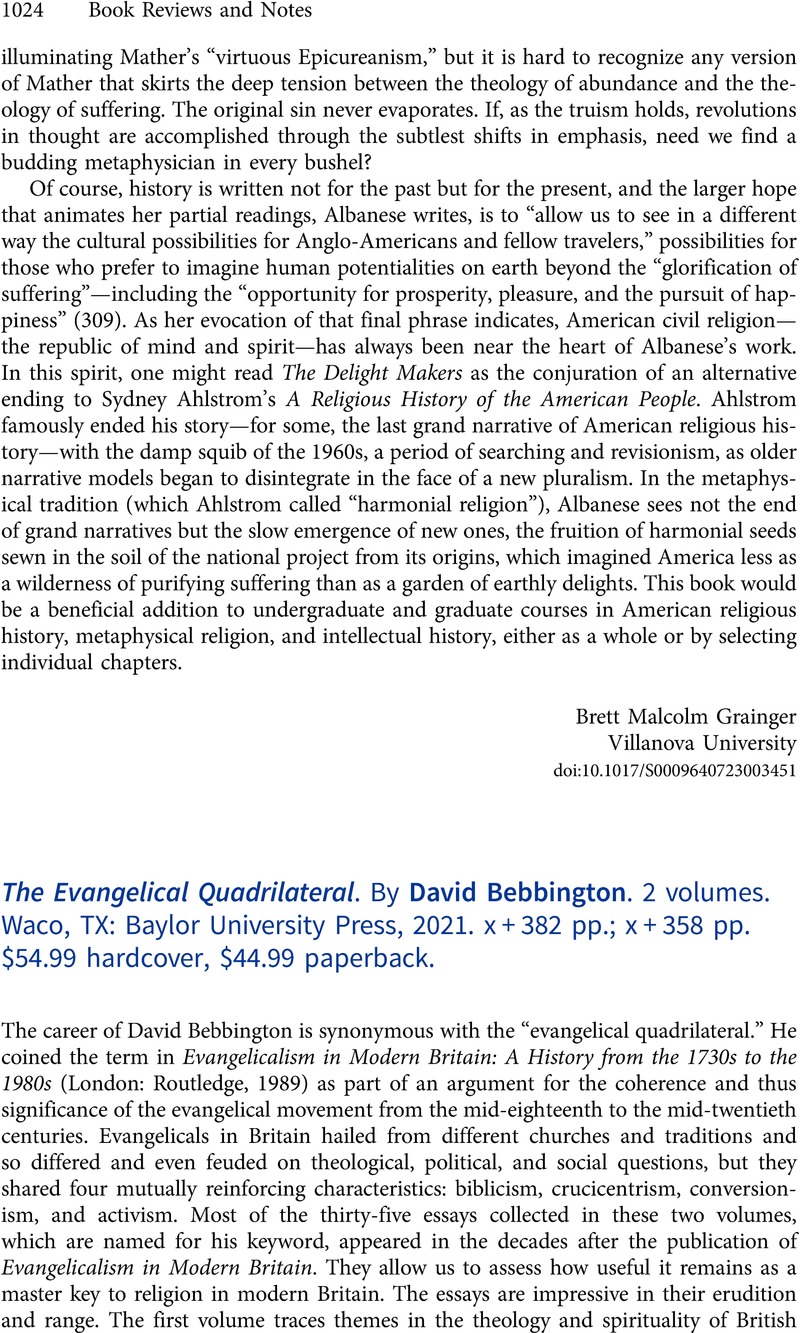No CrossRef data available.
Article contents
The Evangelical Quadrilateral. By David Bebbington. 2 volumes. Waco, TX: Baylor University Press, 2021. x + 382 pp.; x + 358 pp. $54.99 hardcover, $44.99 paperback.
Review products
The Evangelical Quadrilateral. By David Bebbington. 2 volumes. Waco, TX: Baylor University Press, 2021. x + 382 pp.; x + 358 pp. $54.99 hardcover, $44.99 paperback.
Published online by Cambridge University Press: 19 March 2024
Abstract
An abstract is not available for this content so a preview has been provided. Please use the Get access link above for information on how to access this content.

- Type
- Book Reviews and Notes
- Information
- Copyright
- Copyright © The Author(s), 2024. Published by Cambridge University Press on behalf of American Society of Church History


